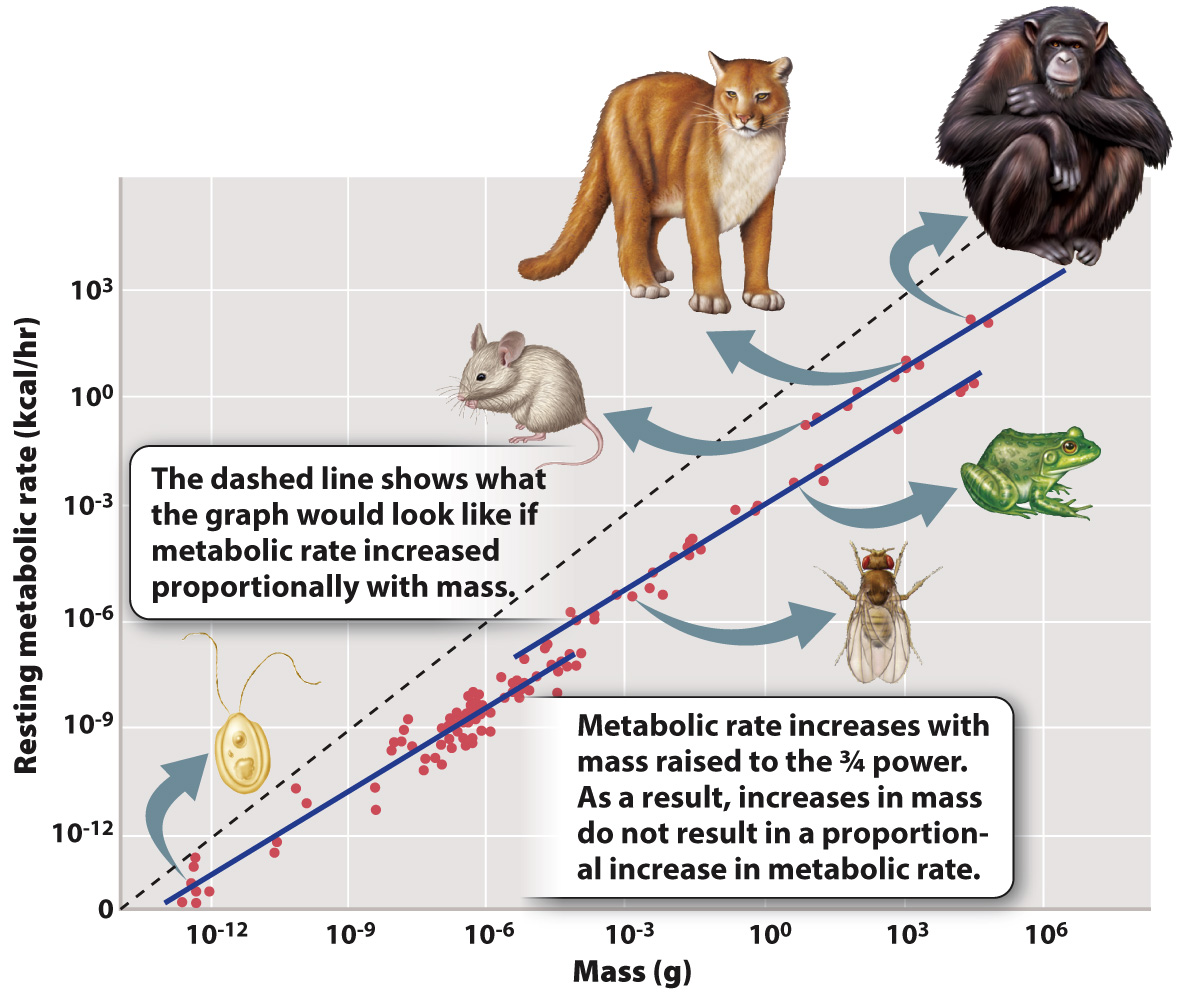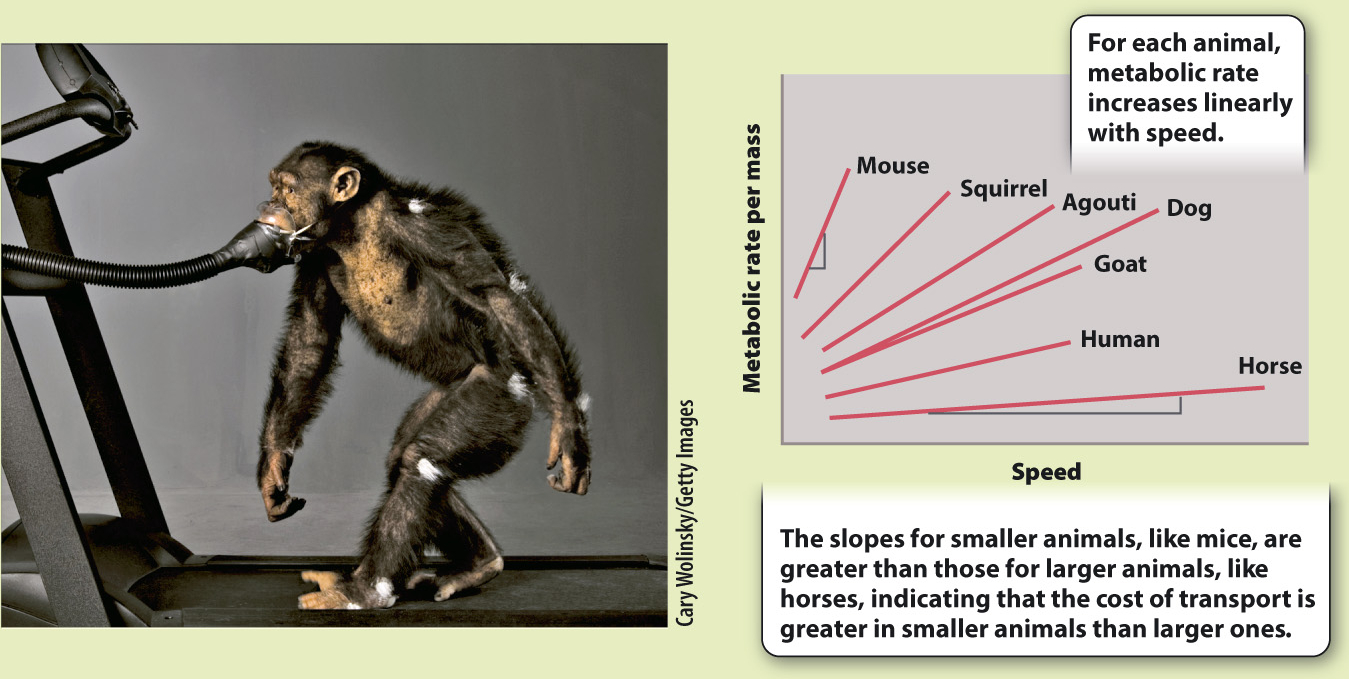Metabolic rate is affected by body size.
In addition to activity level, an animal’s size influences its metabolic rate. At rest, larger animals consume more energy and have higher metabolic rates than smaller ones. However, resting metabolic rate does not increase linearly with an animal’s mass. Instead, measurements of resting metabolic rate in a wide range of organisms show that metabolic rate increases with animal mass raised to the ¾ power (Fig. 40.3). This means that the average rate at which each gram of body tissue consumes energy is less in larger animals compared to smaller ones. Or, put another way, the larger the organism, the lower the metabolic rate per gram of body tissue. This scaling pattern of cellular energy metabolism is remarkable because it holds across a diverse size range of unicellular and multicellular organisms, as can be seen in Fig. 40.3.

In addition to comparing resting metabolic rate in different-
HOW DO WE KNOW?
FIG. 40.4
How is metabolic rate affected by running speed and body size?
BACKGROUND In the 1970s and 1980s, the American physiologist C. Richard Taylor and his colleagues performed studies on the relationship between metabolic rate and running speed in mammals of different sizes. They were interested in understanding the energetic costs of running in different animals.
EXPERIMENT Taylor and colleagues measured oxygen consumption during running for a wide range of organisms. They trained each animal to run on a treadmill at different speeds and measured oxygen consumption using either a face mask or enclosure. Oxygen consumption was used as a measure of metabolic rate.
RESULTS The researchers found that there is a linear increase in metabolic rate with speed in different-

FOLLOW-
SOURCES Dawson, T. J., and C. R. Taylor. 1973. “Energetic Cost of Locomotion in Kangaroos.” Nature 246:313–
Quick Check 2 Does a dog that is twice as heavy as a cat have twice the resting metabolic rate?
Quick Check 2 Answer
No. Metabolic rate increases with increasing mass, but the relationship between the two is not linear. Instead, metabolic rate increases with mass raised to the ¾ power. This means that a dog that is twice as heavy as a cat has a metabolic rate that is less than twice as much as the cat.